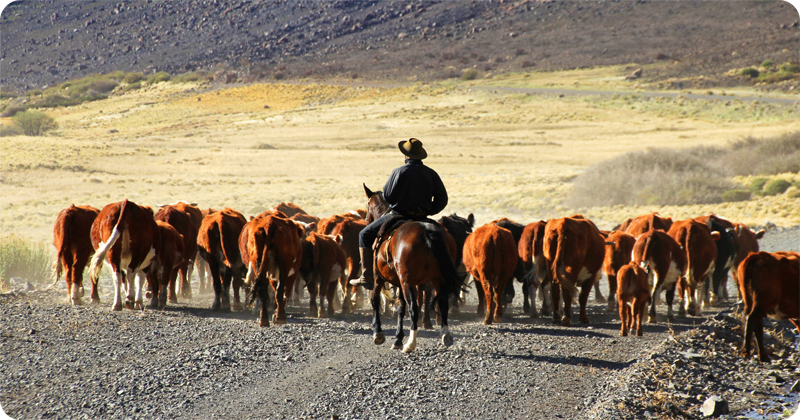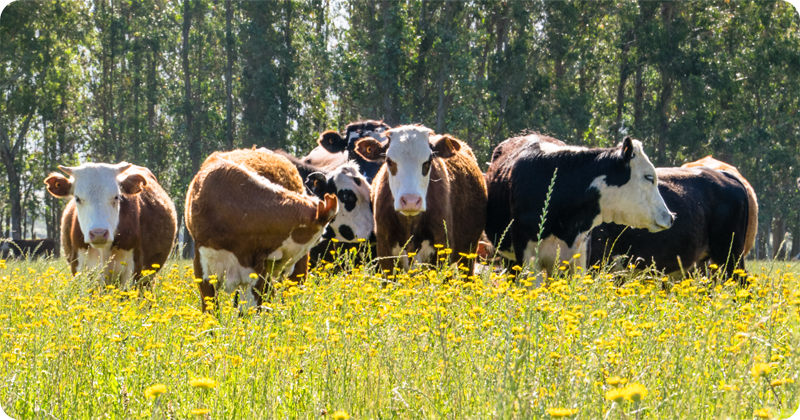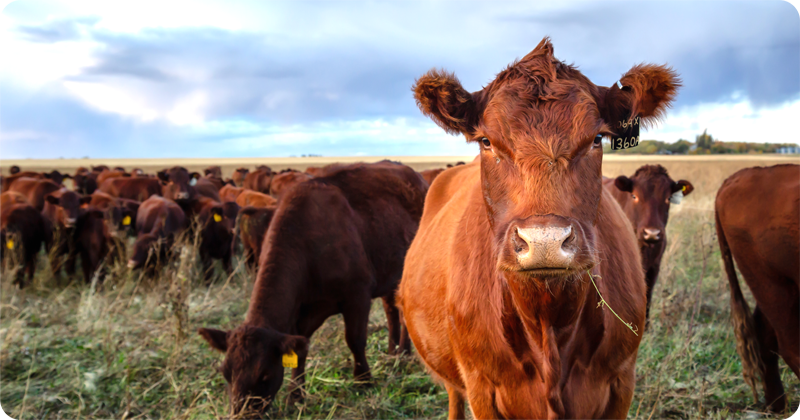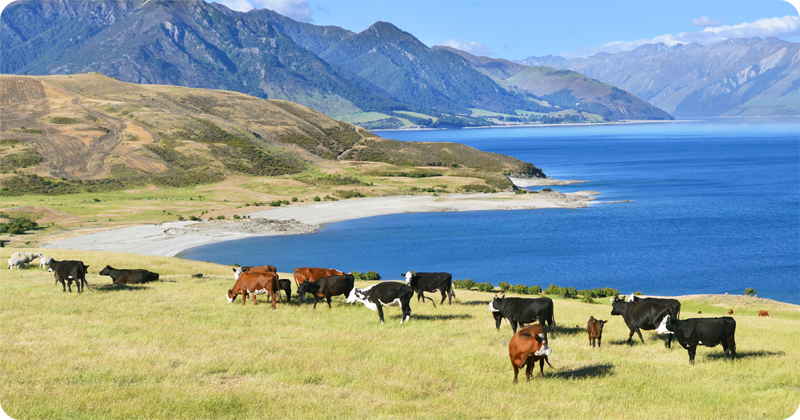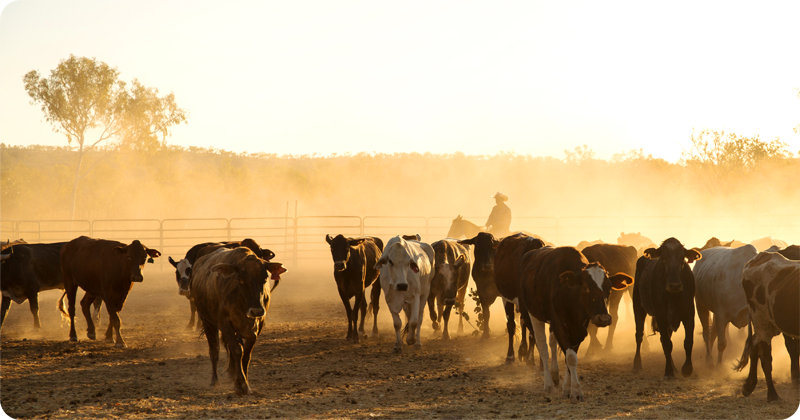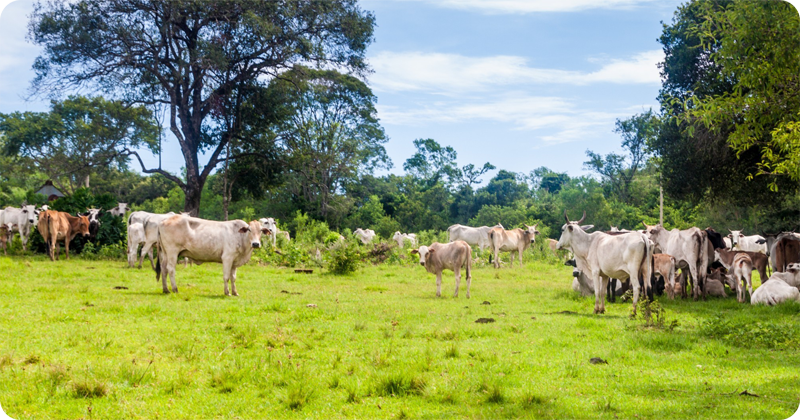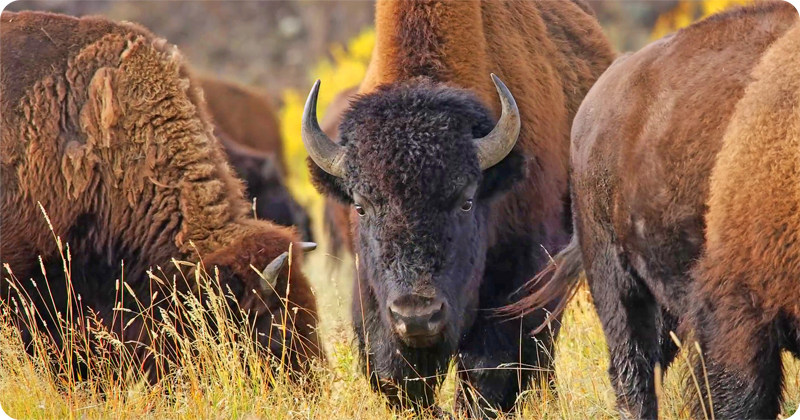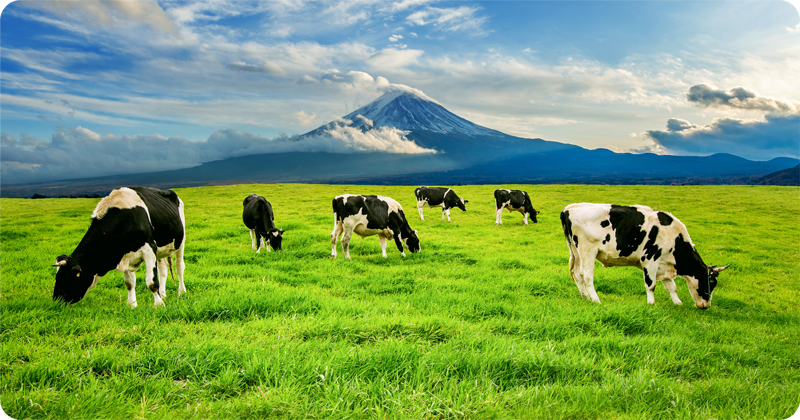
BRAZIL
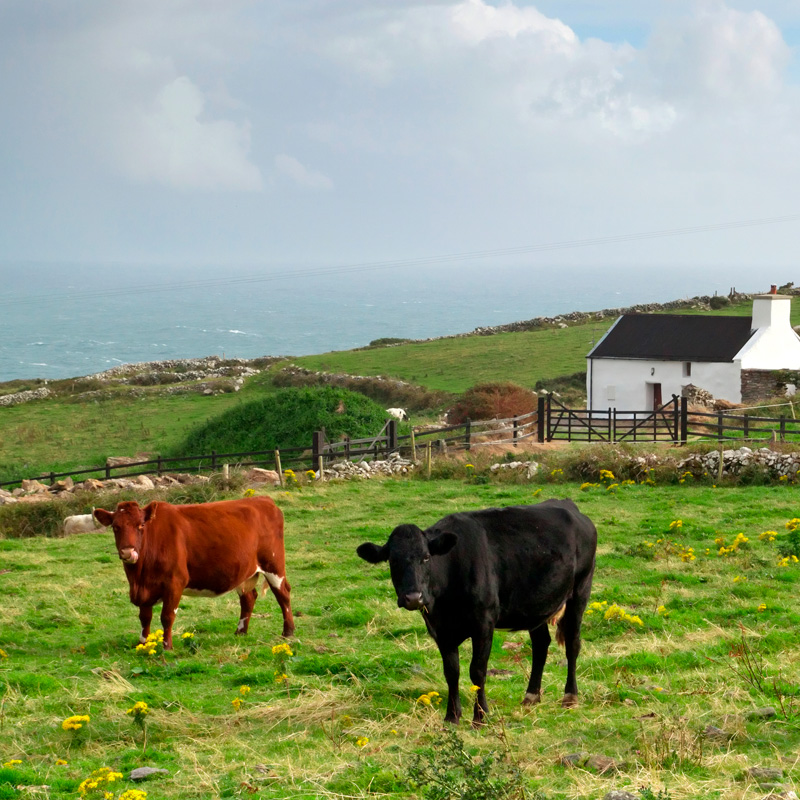
THE ORIGINS
Brazil is a country rich in colours and traditions, including the breeding of quality meats.
Brazil is now one of the world's leading beef exporting countries, and is increasingly highlighted by the quality of its meat. A tender and tasty meat obtained through production systems in temperate, tropical pastures and intensive systems that produce the most distinct quality specifications. The healthy and natural diet of the animals guarantees the authenticity and safety of the meat and the preservation of the environment. The colours and cheerfulness of Brazil, combined with the high quality of its meats, are the ideal basis for creating new, tasty and exotic recipes.
|
|
|||||||||||||||
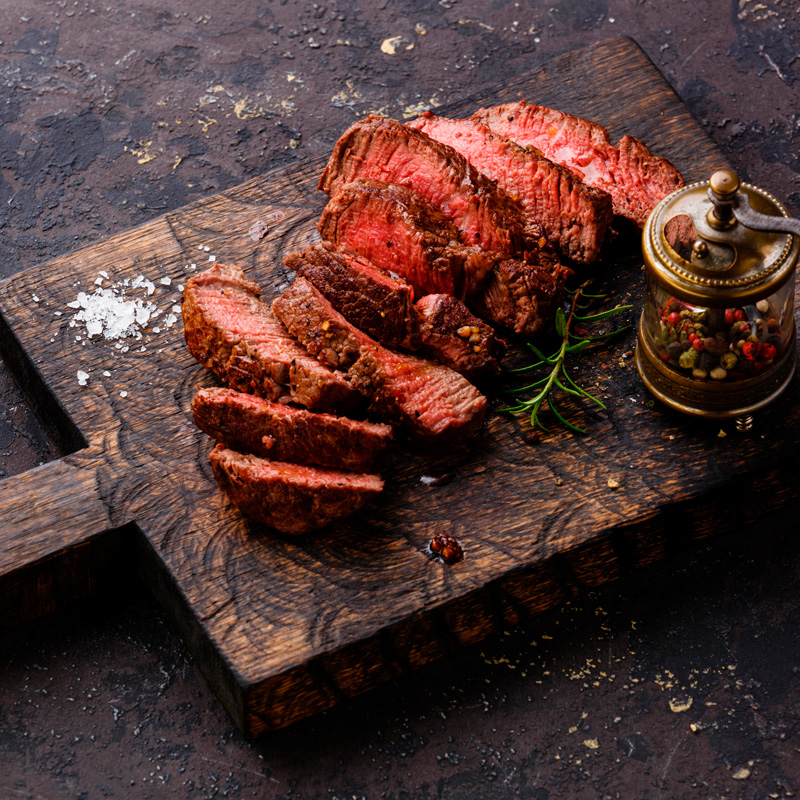
ENTRECÔTE
Very fine cut obtained from the sirloin of Brazilian beef without bone. Thanks to the natural way of rearing the meat, it is particularly tender, tasty and with very little fat, it can be of variable thickness and it is suitable for many different preparations: grilled, baked or pan-fried. In France, the native land of this preparation, it is often accompanied by sauces of various kinds.
Preparation tips
Cooking mode Remove the packaging. Once the package is opened, it is recommended to oxygenate the product for at least 10 minutes so that it regains the typical colour of fresh meat.
Entrecôte with Brazilian dressing
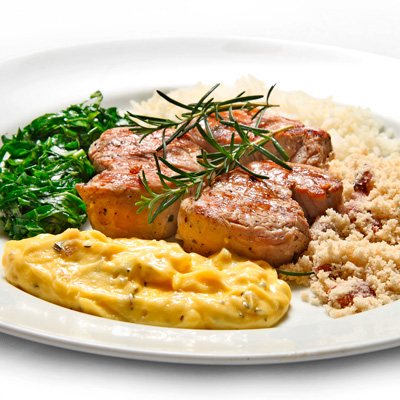 In a hot, oiled pan, cook the entrecotes to taste (from rare to well done), turning the meat only once.
In a hot, oiled pan, cook the entrecotes to taste (from rare to well done), turning the meat only once.Serve hot accompanied by farofa: cassava flour and fried onion heated in butter and with a vinaigrette of vinegar, peppers and onion, white rice or fried potatoes.
FILLET STEAK
Absolutely the most tender and valuable cut. From the lumbar area, the cut involves a muscle almost never trained by the animal, hence its unmistakable tenderness.
Very small in size, it is a single piece that can be divided into three parts, each one perfect for different consumptions. It can be used for making steaks, tartare, carpaccio, chateaubriand, tournedos and filets mignon.
Preparation tips
Cooking mode Remove the packaging. Once the package is opened, it is recommended to oxygenate the product for at least 10 minutes so that it regains the typical colour of fresh meat.
Currant fillet
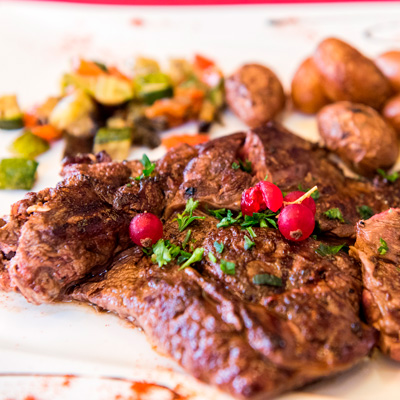 Let the meat fillets rest for 2 hours in a marinade of oil, chopped herbs, onion, carrots and half a glass of dry white wine.
Let the meat fillets rest for 2 hours in a marinade of oil, chopped herbs, onion, carrots and half a glass of dry white wine.Drain the fillets and brown them in hot oil for 5 minutes, sprinkle with a little filtered marinade and cook. In a saucepan boil ½ glass of Marsala with the juice and rind of an orange; add the jelly and the currant fruits. Place the fillets on a serving plate and sprinkle with the sauce.
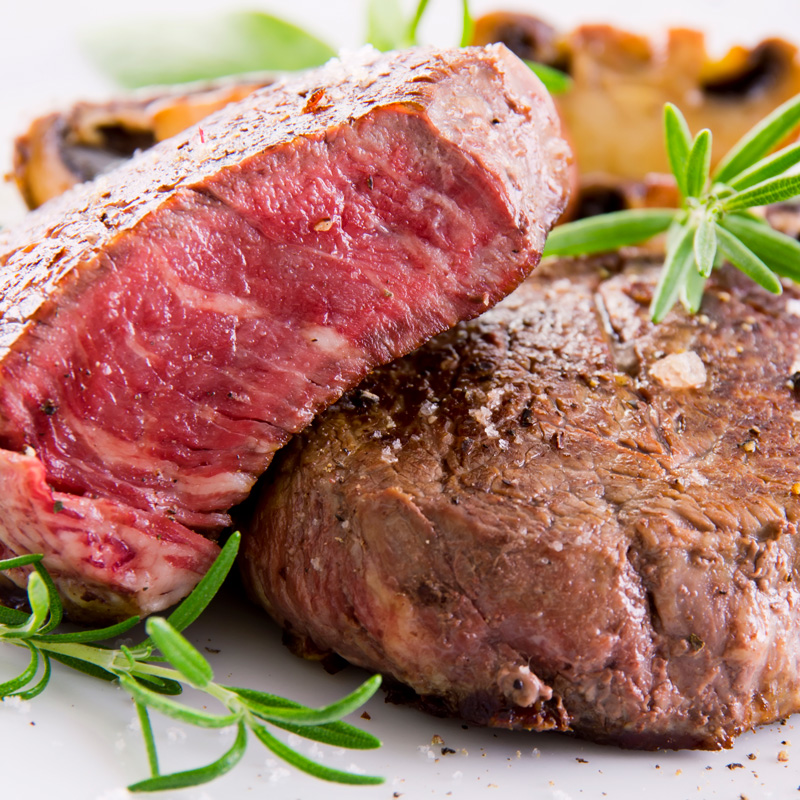
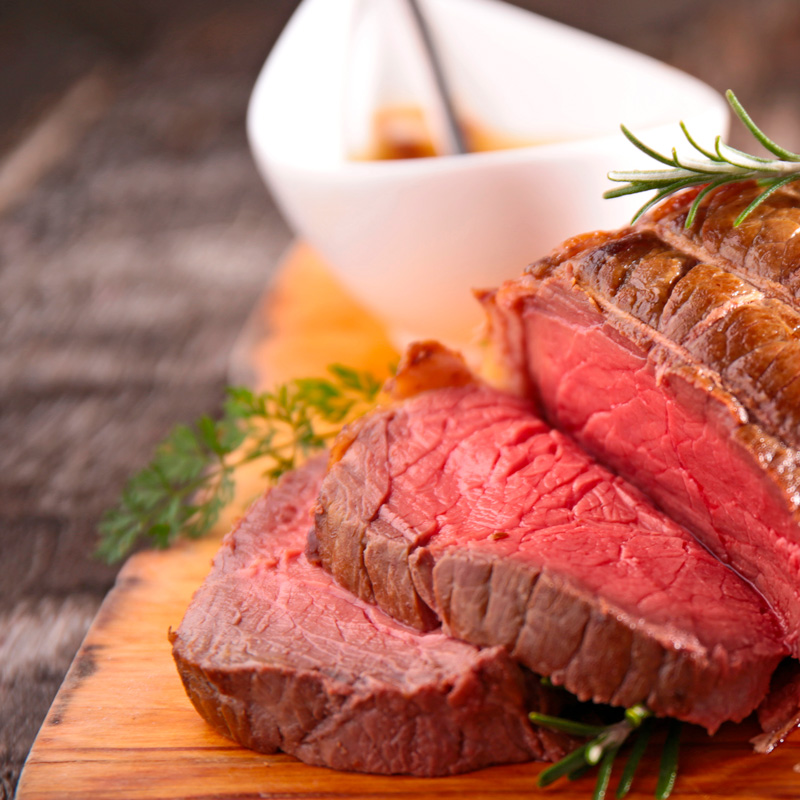
ROAST-BEEF
Top quality cut, thin and wrapped in a thin strip of fat. It includes all - or almost all - the dorsal area of the animal. If with the bone, it is called rib eye, while without the bone, it provides sirloin steak. Suitable for roasting and for the preparation of the typical English roast beef.
Preparation tips
Cooking mode Remove the packaging. Once the package is opened, it is recommended to oxygenate the product for at least 10 minutes so that it regains the typical colour of fresh meat.
Roast-beef in salt crust
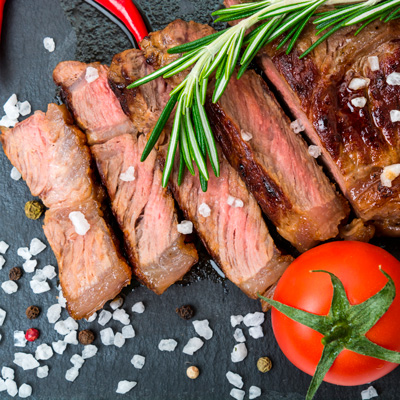 Tie the piece of meat with kitchen string. Make a layer of salt of about half a cm in an oven dish that can contain exactly the meat. Place the roast-beef in it and cover it well with an equal layer of salt. Approximate doses: for 1 kg of meat, 3 kg of coarse salt. Bake in a hot oven at 200°C for 35 minutes.
Tie the piece of meat with kitchen string. Make a layer of salt of about half a cm in an oven dish that can contain exactly the meat. Place the roast-beef in it and cover it well with an equal layer of salt. Approximate doses: for 1 kg of meat, 3 kg of coarse salt. Bake in a hot oven at 200°C for 35 minutes.Serve hot or cold.
RUMP
A cut of rather fine beef that joins the thigh and sirloin. Low fat, tender and moderately digestible, the rump is extremely versatile in the kitchen: ideal for grilling, in the pan or in the oven, it can also be transformed into quality grinded meat. Less suitable for long cooking (boiled, braised and stewed).
Preparation tips
Cooking mode Remove the packaging. Once the package is opened, it is recommended to oxygenate the product for at least 10 minutes so that it regains the typical colour of fresh meat.
Rump with walnuts
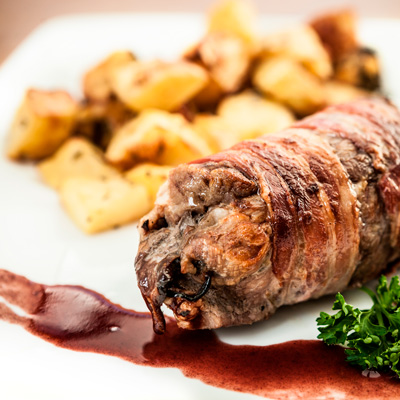 Finely chop 500 g of spinach and 200 g of previously boiled watercress.
Finely chop 500 g of spinach and 200 g of previously boiled watercress. In a greased pan, brown 30 g of walnuts, 2 desalted anchovies and rosemary. Add the vegetables, salt and pepper.
Beat the slices of rump (about 3 mm), spread the filling on each slice of meat and form rolls. Bake for 15 minutes at 220°C. Once removed from the oven, leave to rest for a few minutes and cut transversely into thin slices.
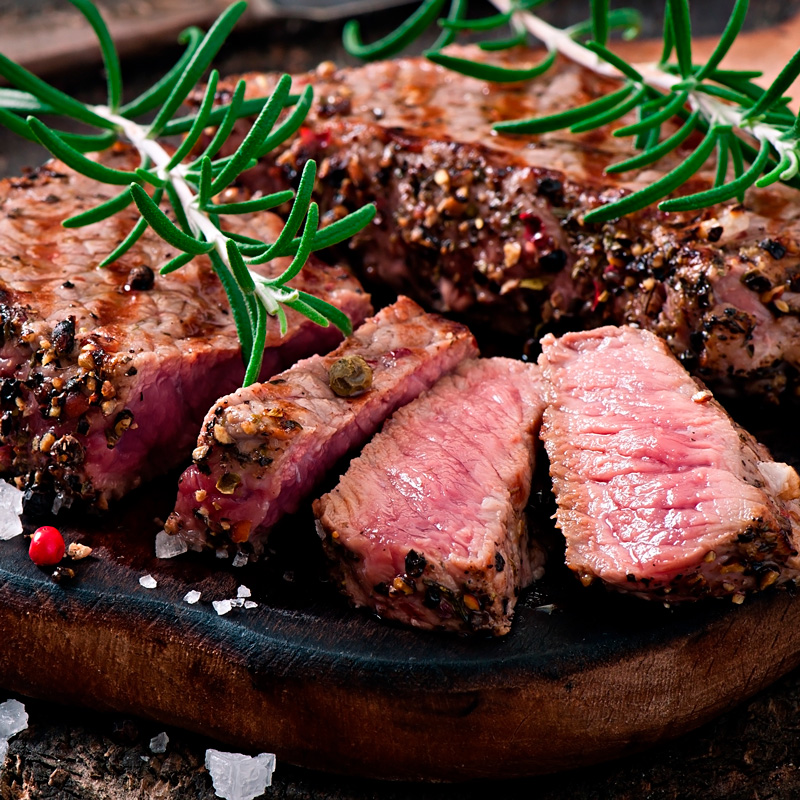
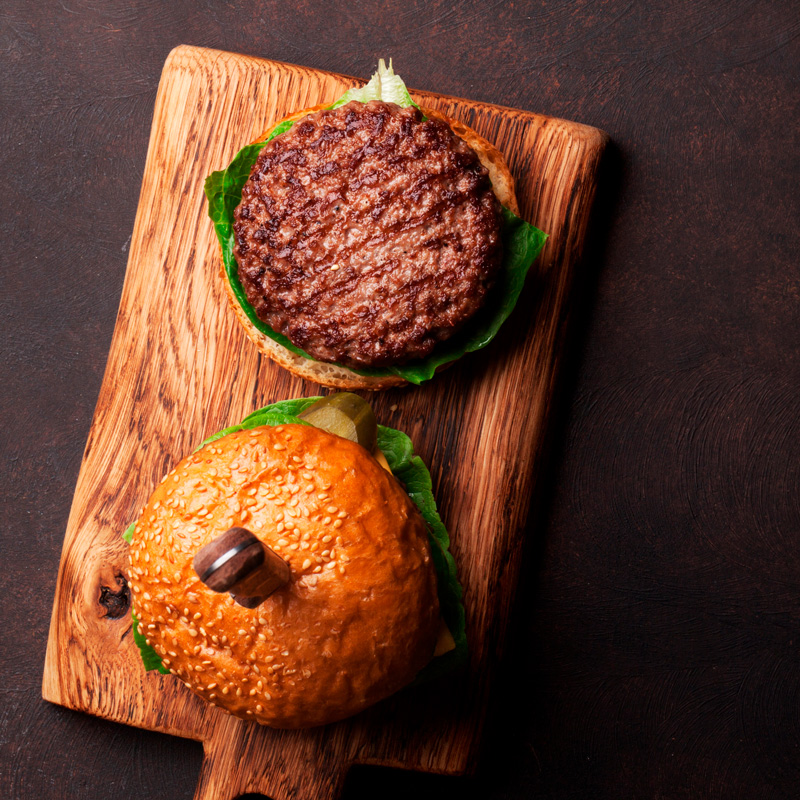
HAMBURGER
Famous dish of minced and pressed meat.
The different types of meat used must create a perfect mix between fat and firm meat in order to obtain the right balance between taste and juiciness. It is mainly cooked in a frying pan or on the griddle and is eaten in a simple way or inside a sandwich with the addition of tomato, lettuce, cheese and sauces at will.
The different types of meat used must create a perfect mix between fat and firm meat in order to obtain the right balance between taste and juiciness. It is mainly cooked in a frying pan or on the griddle and is eaten in a simple way or inside a sandwich with the addition of tomato, lettuce, cheese and sauces at will.
Preparation tips
Cooking mode Remove the packaging. Once the package is opened, it is recommended to oxygenate the product for at least 10 minutes so that it regains the typical colour of fresh meat.
Brazilian burger
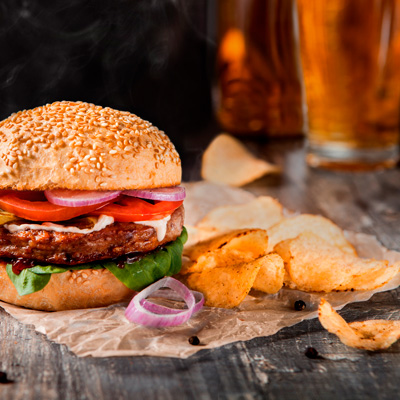 Cook the hamburger on a hot plate. Prepare a sauce with tomato pulp, red onion, spring onion, coriander, lemon juice, tabasco and a pinch of salt.
Cook the hamburger on a hot plate. Prepare a sauce with tomato pulp, red onion, spring onion, coriander, lemon juice, tabasco and a pinch of salt.Toast the bread and arrange: thin slices of raw zucchini seasoned with lemon, meat, tomato sauce and close with the second slice of bread.
Serve with mayonnaise mixed with mustard.
 ARGENTINA
ARGENTINAArgentina produces some of the best meats in the world for taste and tenderness. The goodness and
peculiarities of Argentine meat can be traced back to the completely natural method with which the beef is reared. Left to
live in the wild in the endless pampas, the animals feed exclusively on grass. This type of farming favours the production
in the animal of substancesthat contribute to making the meat soft, tasty and healthy.
 URUGUAY
URUGUAYUruguay produces a meat that, among other countries in South America, is distinguished by quality.
The excellence of the product is based on the type of farming. The animals, in fact, live in the open air in total harmony
with the environment. The result is a meat with a refined taste, high nutritional value, guarantee of origin and
authenticity. Uruguayan meat is rich in Omega 3, Vitamin E (antioxidants) and has low fat levels.
 USA
USAAmerican meat is famous for its high level of marbling, i.e. the uniform spread of fat. This
particular characteristic makes the meat soft, juicy and with a strong and tasty taste.
Cattle are reared in a totally natural way and fed on a maize-based vegetarian diet without the use of supplementary hormones, growth promoters or additives.
Cattle are reared in a totally natural way and fed on a maize-based vegetarian diet without the use of supplementary hormones, growth promoters or additives.
 NEW
ZEALAND
NEW
ZEALANDNew Zealand meat is internationally recognized for its high quality, tenderness and delicious
taste.
The animals grow in an exceptional environment: in the open air, on rich and abundant pastures overlooking the Pacific
Ocean and with a mild and constant climate all year round. They are also subject to regular and very strict quality
controls. The result is a lean, nutritionally rich and high quality meat.
 AUSTRALIA
AUSTRALIAAustralia is known throughout the world to export high quality beef: very aromatic, tasty and with
a well-defined fat part. Tender and juicy thanks to the thin fibres and a high level of marbling. The cattle are reared
with a production system that is based on natural foods such as grass from pastures. The most prized and renowned
Australian meats are Black Angus and the highly prized Wagyu.
 PARAGUAY
PARAGUAYParaguay is one of the world leading beef exporters.
The excellence of Paraguayan meat is based on the type of farming. The animals, in fact, live in the open air in total harmony with the environment.
The meat is known for its marbled appearance, excellent tenderness and flavour characteristics, unbeatable taste and quality.
The excellence of Paraguayan meat is based on the type of farming. The animals, in fact, live in the open air in total harmony with the environment.
The meat is known for its marbled appearance, excellent tenderness and flavour characteristics, unbeatable taste and quality.
 CANADA
CANADACanada, one of the world's leading beef producers, selects the best breeds and raises them in a
pristine natural environment to provide the market with healthy, high-quality beef.
Canada's cool climate is an optimal habitat for animals. Canadian meat is known for its marbled appearance, excellent tenderness and flavour characteristics, unbeatable taste and quality.
Canada's cool climate is an optimal habitat for animals. Canadian meat is known for its marbled appearance, excellent tenderness and flavour characteristics, unbeatable taste and quality.
 JAPAN
JAPANKobe beef is a Japanese delicacy obtained from wagyu, a black mantle cattle of the Tajima breed.
Kobe meat is tender, very tasty and has an excellent taste. The merit lies in the marbling of the meat, which has a high
percentage of fat distributed evenly.
The registered trademark and the strict parameters imposed to define "Kobe's" meat, have made it a precious niche product,
renowned, expensive and sought after throughout the world.


